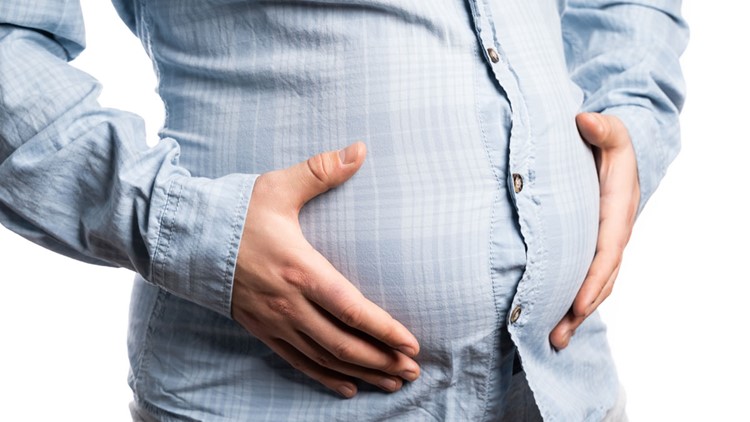NEW ORLEANS — Why Do Men Accumulate Abdominal Visceral Fat? That’s the topic of research published in 2019 in Frontiers of Physiology. “The accumulation of abdominal visceral fat in men, which is a strong independent predictor of mortality, is mainly due to the higher dietary fat uptake by their abdominal visceral fat,” according to the researchers from Ketchum University in Fullerton, California and Washington University in St. Louis.
Premenopausal women accumulate fat below the belt – gynoid or pear shape - while men accumulate fat in the visceral abdominal area – android or apple shape. Post-menopausal females are at greater risk to developing an apple shape that gives them a comparable risk to a man for type 2 diabetes and cardiovascular disease.
It’s important to understand the physiology of body fat accumulation over time. Body fat comes in various classifications – brown, beige, which are capable of thermogenesis (heat producing), and the predominant white, non-thermogenic fat.
White fat comes in different forms – subcutaneous (under the skin), visceral (that surrounds internal organs), and ectopic (located within the internal organs).
As the visceral, high risk fat builds up, the “belly” enlarges, which also includes the subcutaneous fat. While the waist measurement can be a good indicator of the subcutaneous fat, it’s a poor indicator of the deeper visceral fat.
Visceral fat encompasses both intraperitoneal and retroperitoneal fat, which surround the pancreas, duodenum, kidneys, and the ascending and descending colon.
Unlike the subcutaneous fat, it’s the retroperitoneal and intraperitoneal fat, which increases the risk to metabolic syndrome – a cluster of events that predispose the individual to type 2 diabetes, cardiovascular disease and cancer risk.
It appears that a man’s abdominal, visceral fat accumulates from excess consumption of dietary fat. The researchers comment that, “dietary fat is digested and absorbed by the small intestine. The absorbed dietary fat is secreted by the enterocytes in two major forms: chylomicrons and VLDLs (very low-density lipoproteins).”
Studies indicate that chylomicron transport significantly increases more dietary fat storage in men than in women. Those chylomicrons, note the researchers, “preferentially promote the accumulation of the abdominal, visceral fat.”
The researchers recommended, “spreading out the amount of dietary fat intake into several smaller meals, which should reduce the likelihood of abdominal, visceral fat accumulation by reducing both the size and number of chylomicrons.” Exercise is also another avenue to control visceral fat accumulation.
“Based on our proposed mechanisms,” comment the university researchers, “exercising and eating a diet low in fat—or at least spreading the fat intake into several smaller meals—should help in slowing down the development of abdominal, visceral fat.”
In 2006, my book, The Fat Burning Bible (John Wiley & Sons) was released. The book provides a strategic plan to address the accumulation of excess body fat with age. Since male and female physiologies are as different as night and day, the book can be a guide to a gender specific plan of attack to reduce total and high-risk visceral fat.
For more information, go to maxwellnutrition.com.



